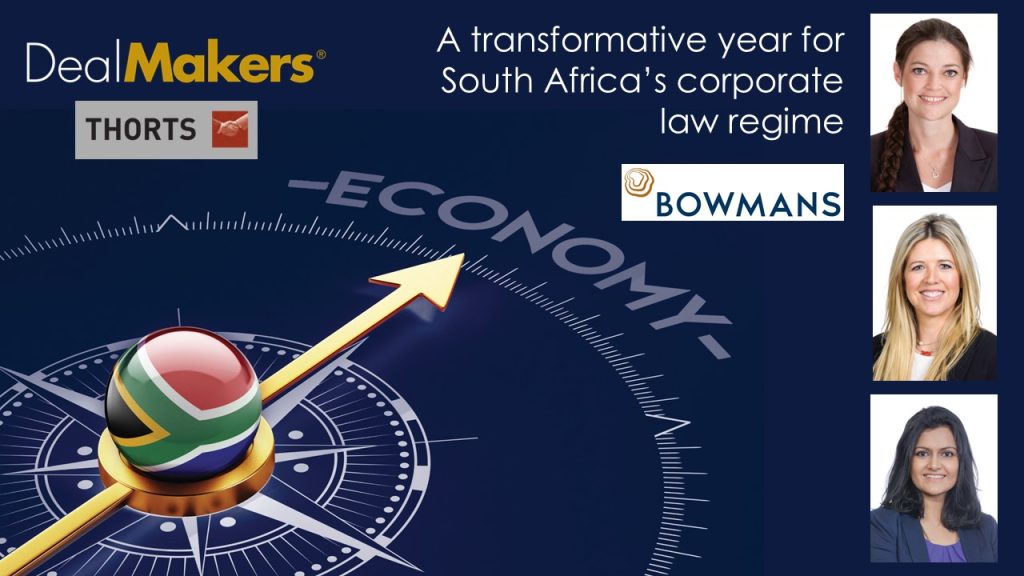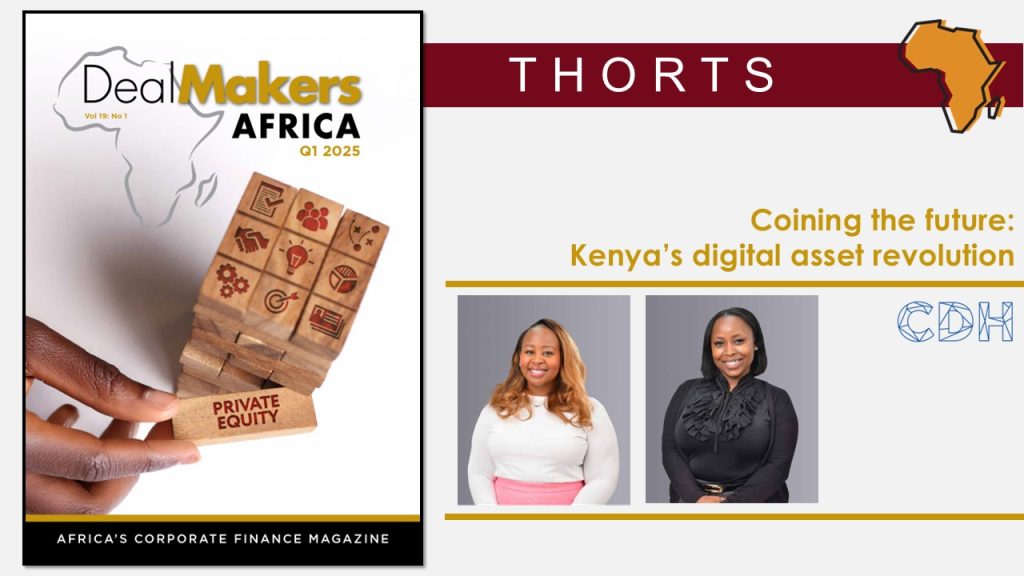4Sight saw a jump in profits – even against a 14-month base period (JSE: 4SI)
But where’s the dividend?
4Sight changed its year-end from December to February in 2024, which means that the base period is the 14 months to February 2024. It’s therefore unsurprising that revenue for the 12 months to February 2025 couldn’t quite match the 14-month period, although it got pretty close. Much more impressively though, operating profit came in well ahead of that comparable period, so there’s been a clear improvement in the underlying business.
The past few years have seen explosive growth at the company. Revenue has almost doubled since 2020 and headline profit has more than tripled. The tech buzzwords are all over this thing, but the numbers are coming through as well.
Margins remain too low though, with a net profit after tax margin of 4.0% and return on equity of 11.9%. Growth is great, but these numbers will need to see significant improvement for the company to attract a premium valuation.
The thing that I don’t understand is why there’s no dividend, despite an ordinary dividend having been paid last year. Flip-flopping on dividends won’t do their valuation any favours either, as investors like consistency. Despite all the growth in the underlying business, this small cap’s share price has been flat for the past year (aside from the usual bid-offer spread choppiness that plagues illiquid stocks).
Double-digit growth at Argent Industrial (JSE: ART)
Operating leverage, financial leverage and…tax leverage?
When a business has operating leverage, it means that percentage moves in revenue lead to larger percentage moves in operating profit (up or down), due to the presence of fixed costs. When there is financial leverage, percentage moves in operating profit lead to larger percentage moves in net profit (again, up or down), due to the presence of debt. So when you have both, a modest change in revenue can lead to a significant move in profits.
At Argent Industrial, revenue for the year ended March 2025 only grew by 3.6%. Operating profit was up by 8.0% and profit for the year increased by 9.7%. This suggests that the usual suspects of operating leverage and financial leverage are doing the work. But if we dig deeper, we find that profit before tax grew by 7% and profit after tax grew by 9.7%. This means that a substantial decrease in the tax rate was a major driver of earnings as well – a more unusual case of tax leverage!
To further improve the numbers, there’s a 1.8% decrease in the weighted average number of shares outstanding. This means that HEPS growth came in at a meaty 12.5% – again, this has been driven by just a 3.6% increase in revenue! The total dividend was 10.4%, so the payout ratio came down slightly but shareholders got double-digit growth nonetheless.
Argent has been pretty focused on building up the group’s international business. The latest numbers certainly reflect that trend, with flat revenue in South Africa and a drop in profit before tax of 28.6%, whereas the “other regions” segment was good for revenue growth of 7.2% and profit before tax growth of 21.9%. As a further indication of relative profitability, revenue across the two major segments is very similar, yet South Africa generated profit before tax of R102 million and other regions generated R265 million.
Growthpoint is responding to major shifts in South Africa (JSE: GRT)
The Western Cape continues to be the oasis
Growthpoint’s update for the nine months to March 2025 is a reminder of how important this year is from a strategic perspective. But before we get into that, let’s deal with the most important news: guidance for distributable income per share growth for FY25 has been improved slightly. They originally expected 1% to 3% and now they expect 2% to 3%. So, it wasn’t as bad as they thought it might be, but it also wasn’t any better than they thought it could be.
The fund is making significant changes, including a R2.8 billion asset disposal target for the year ending June 2025 of office properties (primarily B and C grade offices), as well as older industrial and manufacturing assets and properties in deteriorating CBDs. They are also getting out of motor dealerships. Essentially, Growthpoint is on a mission to improve the quality of its portfolio, rather than having broad exposure.
R2.2 billion is the targeted investment for FY25 into the core portfolio, which includes mainly logistics, industrial and retail assets. Unsurprisingly, the Western Cape is a focus. I have no doubt that their positive experience with the V&A Waterfront has influenced this decision.
Similarly, the plan in the international businesses is to be more focused on a core portfolio, rather than having such broad exposure. They are “evaluating all options” related to Globalworth Real Estate Investments and NewRiver REIT (the latter being the stake they now hold after the disposal of Capital & Regional in a share-for-share deal).
So, how did they do against the targets?
At the nine-month mark, they’ve sold and transferred R1.1 billion in assets. Since the end of March, another R445 million in disposals have been transferred. A further R1.2 billion are in process, of which around R780 million is expected to be completed by the end of June. This would take them to around R2.3 billion, which means they are R500 million off their target. That’s a decent attempt, I think. Notably, of the R1.1 billion already transferred, the total pricing was a R29.6 million discount to book value. Again, not bad at all.
In terms of development and capex spend in South Africa, they’ve invested R1.2 billion thus far. That seems to be just over half their goal, with the announcement not giving further details on that gap.
In terms of performance in the South African portfolio, vacancies improved since June 2024 but ticked up slightly from December 2024 to March 2025, mainly due to the completion of a new speculative industrial development. The lease renewal success rate has been dropping, now at only 67.4% vs. 76.3% in FY24. They seem to be standing firmer on pricing, as reversions came in at -1.0% vs. -6.0% in the prior year. Rental escalations are stable at 6.9%.
Looking deeper, the retail portfolio saw an outperformance by community centres vs. regional malls, with the total portfolio reflecting growth in footfall of 2.6% and trading density growth of 5.5%. Notably, Edgars is either reducing space or exiting malls altogether, so there is once again an Edcon-flavoured headache for landlords. Reversions are at -0.8%, improved from -2.1% in FY24, but with a dip in the renewal success rate from 86.4% in FY24 to 84.6% currently. Again, lower quality retail assets are hurting them. Conversely, the redevelopment of Bayside Mall (and it looks good, I went the other day) has led to a turnover increase of 26% at the property. An interesting move is the installation of their own fibre backbone at Bayside as a source of non-rental income for the retail portfolio and improved data.
The office sector has seen some improvement, with vacancies down from 15.1% in FY24 (and 15.9% in December 2024) to 14.7%. It seems as though vacancies have stabilised at national level. The Western Cape and KwaZulu-Natal continue to outperform Gauteng as companies try desperately to respond to the trend of where people actually want to live. Negative reversions are -3.3%, which is vastly better than -14.8% in FY24. The Western Cape is the only positive region at 3.5%.
In logistics and industrial properties, vacancies improved to 4.4% from 5.2% in FY24, although speculative developments did drive an increase in vacancies vs. December 2024. It’s fascinating that although office and retail trends are so firmly in favour of the Western Cape, the Gauteng logistics properties continue to do very well. There are of course tons of people in Gauteng, but the overall deterioration of the place means that the way they can be serviced by the likes of Growthpoint is changing. Having said that, the Western Cape is once again the only region with positive reversions in this portfolio.
It’s always worth touching on the performance at the V&A Waterfront. EBIT grew by a whopping 23% for the nine months. Here’s the really interesting thing though: on a rolling 12-month basis, visitor numbers fell by 2%. They attribute this to the rise in online grocery sales. You ignore changing consumer behaviour at your own peril.
The various international operations are all separately listed and can be referred to directly for more details. I personally find it more interesting to focus on the South African insights in the Growthpoint announcement, as they tell us something about the entire property sector in our country as well as a look-through into retail trends (like online shopping).
On the debt side, the weighted average rand cost of funding has decreased from 9.6% in FY24 to 9.1%. If you include cross-currency interest rate swaps and foreign-denominated loans, the improvement is from 7.2% to 7.1%. The swaps are the reason for a more modest improvement on that basis.
If you can believe it, this was just a summary of the insights in what was a very long and detailed nine-month update.
Hyprop enjoying higher retail sales, but footfall is flat in South Africa (JSE: HYP)
Here’s another example of the effect of eCommerce adoption
Hyprop has released an operational update for the five months to May 2025. The announcement goes into tons of detail about specific tenants, with the only really interesting point being that the reduction of space by Edgars comes up again (as it did with Growthpoint). But the good news for Hyprop is that the major reduction at Canal Walk was replaced by a premium Jet store, so all is well from a landlord perspective in that particular case.
The South African portfolio saw a 7% increase in tenant turnover for the five months to May, thanks to trading density being up 10.2%. Footfall was just 0.1% higher, with a clear trend of shoppers adopting eCommerce as an alternative. This doesn’t mean that Hyprop and its tenants can’t make money – it just means that I can’t see why footfall would grow from here.
In Eastern Europe, tenant turnover for the five months was up 3.5% and the footfall impact is even more stark, with a drop of -3.3%. Trading density rose by 4.0%. Vacancies are almost non-existent at a 0.1% vacancy rate, but I don’t like that footfall trend.
The loan-to-value ratio improved from 36.3% in December 2024 to 34.2% thanks to the capital raise in June. Note that in this case, they are quoting a metric that goes beyond the end of May. Of course, the real question is around whether they are going to have a crack at an acquisition of MAS. At this stage, they are still playing it coy, with fluffy paragraphs about why they like the idea of making a bid for MAS. At this stage though, there’s nothing concrete.
Overall, they expect to achieve the guidance for distributable income for the year ended June 2025 (an increase of 4% to 7%). But of course, having now raised loads of new capital, the growth on a per-share basis has plummeted to a range of -1% to 2%. When you’re putting out numbers like that, you can’t be out there making will-they won’t-they statements about a deal forever. There’s now a genuine cash drag on the balance sheet and a negative impact on shareholders. If they are going to do something with MAS, it needs to become clear sooner rather than later.
Schroder European Real Estate is still struggling with valuation pressures (JSE: SCD)
European office properties aren’t doing well right now
Schroder European Real Estate released its results for the six months to March 2025. It gives you a sense of how tough things are that the company is crowing about a positive total return. In other words, if you offset the dividend against the drop in the net asset value (NAV) per share, you come out slightly positive. How exciting.
Share buybacks helped achieve that outcome, so at least they are reducing the number of shares in issue at a time when capital values for the underlying properties are going the wrong way. The exception to this is the industrial portfolio, which saw an uptick in the valuation.
Another way of seeing this is that EPRA earnings before exceptional items fell from €4.3 million to €3.9 million – and if you then account for the negative valuation movements, you get to a small IFRS loss.
A further challenge they are dealing with is a fight with the French Tax Authority. Schroder has taken advice and hasn’t raised a provision at all, which is a pretty aggressive approach. We don’t often see European tax fights on the South African market, but it feels pretty unlikely that the exposure is truly zero.
Their outlook for the market isn’t exactly the most bullish thing you’ll read all day. They expect only gradual improvements in 2025, with a hope for better conditions in 2026. Their balance sheet is at least in good shape to navigate this, with the loan-to-value ratio at 18%.
Sirius wasted no time in announcing another acquisition – and a disposal! (JSE: SRE)
This comes off the back of a fresh debt facility having been raised
As I wrote when Sirius Real Estate announced a new revolving credit facility this week, you can expect plenty of deals from the group as they look to deploy equity and debt capital. The latest such example is the acquisition of a light industrial property in Geilenkirchen, Germany, for €12.9 million.
This is a sale-and-leaseback transaction with an engineering firm that entered into a triple net lease on the property, which is a structure that means that Sirius isn’t taking the risk of operating cost overruns on the property. The net initial yield on the deal is 9.3%.
Despite having so much capital that they need to deploy, Sirius couldn’t say no to the opportunity to dispose of a small non-core asset in the UK for £1.55 million. This price is a 7% premium to the most recent book value and reflects a disposal yield of 8.1%. It may be a small disposal, but this is the kind of dealmaking that gives Sirius a strong reputation among investors.
Try not to fall off your chair: Thungela has noted an improved Transnet Freight Rail performance (JSE: TGA)
It helps greatly if they can actually get their products to port
Thungela has released a pre-close update for the six months to June 2025. The most exciting news is surely the 17% year-on-year improvement in rail performance at Transnet Freight Rail. They expect further improvement in 2026. Before you get too excited about government progress here, I must remind you that industry collaborative initiatives are largely to thank for this, with the private sector stepping in to try and solve public sector problems – how utterly unusual in South Africa.
In Australia, where Thungela acquired the remaining stake in Ensham from co-investors, production and sales were negatively impacted by “challenging geology” in the first half of the year. Presumably after talking to the rocks and asking them nicely to do better, Thungela expects better production in the second half.
Coal prices unfortunately have a very bearish story to tell in 2025. Benchmark prices are sharply down in both South Africa and Australia for the five months to May 2025 vs. FY24, with decreases of 12.9% and 24.6% respectively. On top of this, the discount to the Richards Bay benchmark coal price has increased based on weak markets, so the average realised export price has actually fallen by 14.5%. In Australia, the discount has been consistent, but the benefit of fixed price contracts has meant that the average realised export price has only decreased by 11.4%. The challenge is that a portion of the price is subject to adjustments, so the final decrease will likely be slightly worse.
It really is so typical that when coal prices were high, Transnet couldn’t deliver. Now that coal prices are falling off, Transnet has improved and export saleable production increased from 6.2Mt to 6.4Mt. In terms of FOB cost per export tonne in South Africa, they expect to be marginally above the upper end of guidance for the year, as production was impacted by higher rainfall.
Those geological issues in Australia were no joke, with production at Ensham down from 2.1Mt to 1.6Mt (both on a 100% basis to avoid the effective shareholding change distorting these numbers). Unsurprisingly, lower production means that the cost per tonne will be above guidance, as fixed cost overhead recoveries take a serious knock when production decreases.
In terms of capital expenditure, they’ve put R1.1 billion into the South African business (a fairly even split of sustaining and expansionary capex), while Ensham’s capex is expected to be R127 million for the half year, with the majority of the spend coming in the second half.
With net cash of between R5.9 billion and R6.1 billion, Thungela’s balance sheet remains very strong. They need it, as the drop in coal prices has led to the share price shedding a quarter of its value over 12 months and a third over 6 months. You need a strong stomach for cyclicals:

Nibbles:
- Director dealings:
- Adrian Gore has put another huge hedge in place over his position in Discovery (JSE: DSY). Firstly, he had to sell shares worth R10.5 million as early settlement of the previous collar. Then, he bought puts at a strike of R215.07 per share worth R446 million and sold calls at a strike price of R297.52 per share worth R617 million. The expiry dates are in 2031. For reference, the current spot price is R211, so the puts are approximately at the money. In simpler terms, he’s locking in the current level and giving away upside above the call strike price 6 years from now.
- The CEO of Pan African Resources (JSE: PAN) sold shares worth around R5 million. It’s interesting to see some profit-taking in the gold space.
- A director of Vodacom’s (JSE: VOD) South African subsidiary sold shares worth almost R1.4 million.
- Non-executive directors in Anglo American (JSE: AGL) were happy to receive shares in lieu of fees to the value of around R750k.
- After a significant rally in Santova (JSE: SNV) and recent director buying, it’s certainly worth noting that a director of a major subsidiary of Santova has sold shares worth nearly R330k.
- The chairman of Sasol (JSE: SOL) bought shares worth R82k.
- Barely worth mentioning, but the size is likely due to lack of volumes rather than anything else – Sean Riskowitz has bought just R416 worth of shares in Finbond (JSE: FGL). Not R416k – R416, as in the price of grabbing some food for the family at your local burger joint.
- Accelerate Property Fund (JSE: APF) is moving its listing to the General Segment of the Main Board of the JSE, giving themselves a regulatory framework that is more appropriate for where the company is in its journey. They also used this as an opportunity to remind the market that much progress has been made in the past 18 months, including a significant drop in vacancies at Fourways Mall.
- Oando (JSE: OAO) has released more details on its results for the three months to March 2025. They increased volumes by 72% and have made progress on other growth projects. Margins were the story of the period though, with gross profit up 172% despite an increase in revenue of just 2%.
- Mantengu Mining (JSE: MTU) issued shares worth R9.4 million to Disruptioncapital as part of the broader equity facility in place with GEM Global Yield LLC.



















